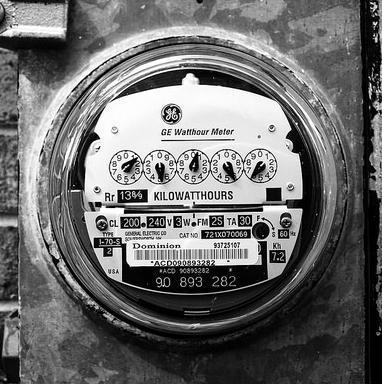By annual presidential proclamation, October is Energy Awareness Month. The Federal Energy Management Program is supporting Energy Awareness Month this year with a plan and resources for federal agencies to raise awareness of energy-and water-saving possibilities in their buildings and operations.
 Here at LEAP, we want to support you by deconstructing and explaining the monthly record of your electricity, usage — your bill. Understanding how much electricity you use, how the cost is calculated and what the various fees are for is a great step to becoming more energy aware.
Here at LEAP, we want to support you by deconstructing and explaining the monthly record of your electricity, usage — your bill. Understanding how much electricity you use, how the cost is calculated and what the various fees are for is a great step to becoming more energy aware.
kW vs. kWh
Let’s start with the units of measure used to count and bill electric usage. A kilowatt (kW) is one thousand watts, just like a megawatt (mW) is one million watts. A “watt” (W) is a measurement of power.
A kilowatt-hour (kWh) is the amount of energy equivalent to a power of 1 kilowatt running for 1 hour. If you leave a 100 watt light bulb on for 1 hour, you’ve used up 100 watt-hours. Your electric company will bill you by the kilowatt hour, so you’ll get a bill for .1 kWh, multiplied by your per-kWh rate, which averages $.1136 in Virginia.
That means if you run a 100 watt bulb for an hour a day for 30 days in a month, and you pay $.12/kWh, your bill will be for .1 kWh x 30 days x $.12, or $.36.
Of course you use a lot more than .1 kWh. The average household in Virginia uses 1,120 kWh monthly and pays $127.23, but that $.1136 /kWh includes several charges that are not actual kilowatts delivered to your home.
I’m paying for what?
The costs on your electric bill are itemized and most of the rates for these charges are based on your monthly kWh usage. The more kilowatt hours used, the higher these charges. These rates are approved by the State Corporation Commission (SCC).
Distribution charges are for delivering power to your house using wires in your utilities’ service area. Think of this cost as the wires around Charlottesville, Albemarle and the surrounding region, including the wires in your neighborhood and connected to your home. Transmission charges are for the cost of moving power from power plants to your utilities’ service territory.
The Fuel charge on a utility bill is exactly that, the actual costs for fuel used to generate the amount of electricity used within your residence. This charge is subject to change as the price of fuel fluctuates.
The Sales and Use surcharge is for the recovery of past purchases and leases by the utility. The State/Local Consumption Tax is mandated by Virginia state code. Any local utility tax is imposed by local ordinance. If you have elected to enroll in an optional Green Power program, you will see that cost detailed too. Lastly, Generation is the actual kilowatt hours used.
If you have a grid-tied photovoltaic system and produce enough solar energy to meet your needs, you will still see a small connection charge on your monthly bill.
Some utilities, particularly electric cooperatives, impose a flat monthly basic customer charge — also approved by the State Corporation Commission — to recover certain fixed expenses associated with making utility service available to your location. Customers pay the same amount regardless of their usage.
Analyze your usage
In addition to the separate detailed charges, your monthly energy consumption for the current month and the previous 12 months appears under Usage History. Historical usage data can be very helpful in noticing patterns, spikes and other changes in your electricity consumption. If you make an energy efficiency upgrade like added insulation or a new ENERGY STAR® refrigerator, make sure to track its effect on your bill.
Be sure to check out your utilities’ online options for your account, too. Many utilities have developed analysis tools that compare your usage and cost month to month and year over year, incorporating weather and temperature data and rate changes.
Understanding your electric bill and paying attention to how it changes, is a great way to increase your energy awareness and start taking action to reduce your energy use and cost.
